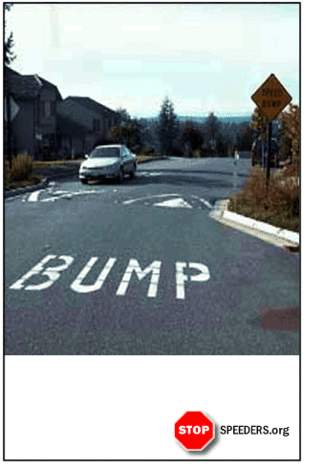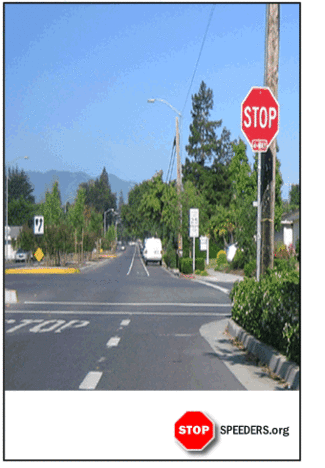Saturday, June 11, 10:00 - 11:30 am
Brook Hollow Baptist Church at 678 Brook Hollow Rd (at the building where many of you come to vote)
Sgt. Steve Linn from West Precinct will join us to talk about neighborhood speeding and what can be done.
Here are things to consider prior to our meeting.
Speed Bumps
Pro's: Moderate cost. Effective in slowing speeds. Government familiarity.
Con's: Increased noise level. May impede fire trucks and other emergency vehicles. May be unsafe to bicyclers, motorcyclists and others.
Employing speed bumps in order to slow traffic has been a popular choice for neighborhoods and government agencies throughout the U.S. In the past twelve years, the city of Portland, Oregon, for instance, has installed more than 300 speed bumps. The reaction has been mixed.
While speed bumps are proven effective in slowing average traffic speed, they also have drawbacks that must be considered. The first is noise.
Researchers of one study estimated that the undulation of cars passing over the speed bumps increased the volume of car noise by 10 to 20 decibels. Another test found that cars driving over the bumps at 10-15 mph had a noise level equal to a car traveling 25-30 mph. Trucks passing over the bumps at 5 to 10 mph had a noise level equal to a truck going 25-30 mph. The study also concluded that the slower speed made the noise last over a longer period of time.
As an anecdote, there is a local story circulating around one state in the Midwest about a city official that went to great efforts to have a speed bump placed on the neighborhood street right next to his house. Once completed, he immediately noticed that when an open bed truck drove across the bump, the tools, concrete, equipment and whatever else was being hauled in the back of the truck would fly in the air and slam back down, creating a noise that was constant and distracting. It took him quite a bit longer to have the bump removed than it did to have it installed.
Another concern with speed bumps is that they impede fire trucks and other emergency vehicles. For this and other reasons, city traffic departments typically conduct extensive evaluations of the target sites before approving installation. Speed bumps are usually prohibited on streets designated as main routes for emergency vehicles.
One last consideration is the fact that speed bumps, like stop signs, often have a negative effect on adjacent streets. Drivers will often change their driving pattern to avoid the bumps all together, which simply moves the problem from one block to the next. For this reason, you may find nearby neighbors opposed to any plans for installing speed bumps.
Stop Signs and Speed Limit
Pro's: Uncomplicated to install.
Con's: Not effective in slowing traffic. May cause speeding, noise, pollution and dangerous road conditions.
While both of these options seem logical enough, studies have again shown that the opposite might be closer to the truth. Stop signs are generally used to indicate which driver has the right-of- way at an intersection. They are great at preventing crashes - not so good at getting drivers to reduce speeds. In fact, it's been found that drivers often increase their speed after stopping at a stop sign. When stop signs are posted for the purpose of slowing traffic, studies find that drivers often exhibit a resentful attitude toward them. This increases the chance of drivers simply running the stop signs, as well as speeding. Not good.
Installing speed limit signs may seem to be a logical solution to remind drivers not to speed. But numerous studies show that speed limit signs have little impact on actual driving speeds! They find that drivers do not operate by the speedometer, but by the conditions they meet.
More often than not, they ignore posted speed limit signs and drive at a rate they consider convenient, reasonable and safe under existing conditions. Right or wrong, these findings strongly suggest that speed limit signs have little effect on slowing traffic.
Article from StopSpeeding.org
http://www.stopspeeders.org/options.htm
 
As always, I welcome your input. Please feel free to call me or e-mail me with any suggestions or questions. |